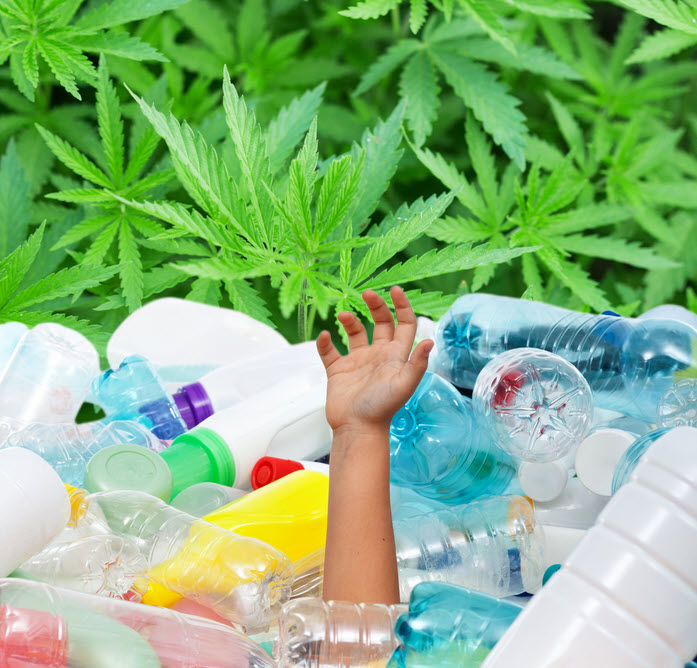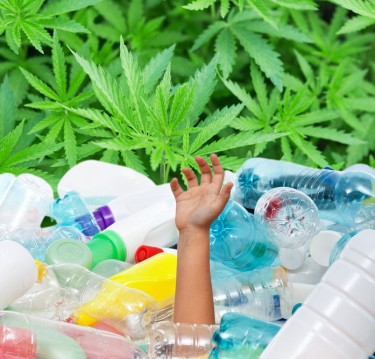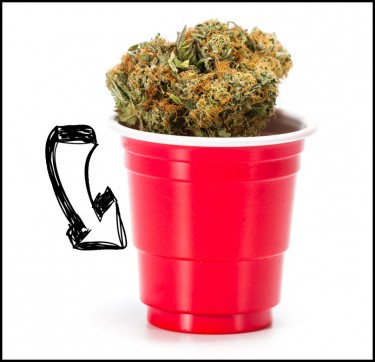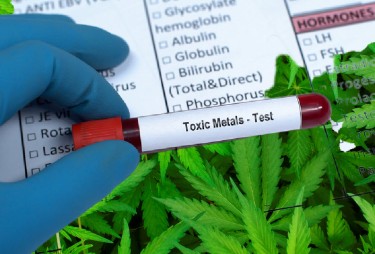Cannabis News
State Cannabis Gun Right Laws Won’t Work
Published
1 year agoon
By
admin
In the past few weeks, I’ve published a few posts (here and here) about recent federal cannabis gun rights cases. In those cases, the courts disagreed on whether the federal government can prohibit cannabis users from owning guns. On the other end of the spectrum, there are state-level efforts to protect gun rights for cannabis users. They aren’t going to work, and I’ll explain why below.
To set the stage a bit, current provisions of the federal Gun Control Act of 1968 deems cannabis users to be “prohibited persons” who may not legally own or possess firearms. Cannabis users have no gun rights even if they live in states that allow medical and/or recreational marijuana. These gun control laws are what have been at stake in the federal cases I described above. They are likely to be litigated in yet other federal court cases and – unless Congress finally does its job and legalizes cannabis – has a strong chance of making its way to the U.S. Supreme Court.
In the meantime, states are going to start doing what they’ve done since the late 90s – taking matters into their own hands. A good example of this is Missouri, which in 2021 passed House Bill 85, which was referred to as the Second Amendment Preservation Act (SAPA). SAPA, interestingly, does not mention marijuana at all. The law takes a more circuitous aim at federal intervention via gun control laws. Specifically, section 1.420 says:
The following federal acts, laws, executive orders, administrative orders, rules, and regulations shall be considered infringements on the people’s right to keep and bear arms, as guaranteed by Amendment II of the Constitution of the United States and Article I, Section 23 of the Constitution of Missouri, within the borders of this state including, but not limited to:
(1) Any tax, levy, fee, or stamp imposed on firearms, firearm accessories, or ammunition not common to all other goods and services and that might reasonably be expected to create a chilling effect on the purchase or ownership of those items by law-abiding citizens;
. . .
(4) Any act forbidding the possession, ownership, use, or transfer of a firearm, firearm accessory, or ammunition by law-abiding citizens; and
(5) Any act ordering the confiscation of firearms, firearm accessories, or ammunition from law-abiding citizens.
Because qualifying individuals could use medical marijuana in accordance with Missouri law, SAPA declared federal gun control laws to be infringements of those persons’ rights. And section 1.430 of SAPA therefore held such infringing laws “invalid” and incapable of enforcement within the state.
Before getting into the controversy here, it’s worth pointing out there there are at least some plausible arguments in favor SAPA under the Tenth Amendment to the U.S. Constitution. As Reason pointed out back in 2021: “The Controlled Substances Act even contains a 10th Amendment-like clause which says when in ‘positive conflict’ between state and federal law where both cannot stand, that state law should take precedence in areas that would ‘otherwise be within the authority of the state.’” The problem is that up until now, I’m not aware of any court accepting a Tenth Amendment claim for marijuana rights.
As you might expect, the federal government didn’t much care for SAPA. Indeed, it sued the state of Missouri, and in early March 2023 handily defeated the state – SAPA violated the Supremacy Clause, it was preempted by federal law, and so on. I won’t get into the weeds on this one, but suffice it to say, Missouri lost and lost hard.
Now let’s just assume for a second that Missouri had prevailed or a different state passed a similar law. At the end of the day, firearm sellers must still have federal firearms licenses (FFLs) and comply with federal laws. One of those laws is the gun control law that’s led to this mess in the first place. That law says in plain terms that:
It shall be unlawful for any person to sell or otherwise dispose of any firearm or ammunition to any person knowing or having reasonable cause to believe that such person, including as a juvenile—
(3) is an unlawful user of or addicted to any controlled substance (as defined in section 102 of the Controlled Substances Act (21 U.S.C. 802)) . . . .
Even if SAPA or a comparative law provided a shield against these federal laws, FFL holders would still risk their licenses if they violated the law. So in reality, the law seems more symbolic than anything else.
The bottom line is that if marijuana users are to ever have gun rights restored, they need to focus in on changing federal law. With a potential circuit split on marijuana gun rights emerging, that may happen in the near future. Stay tuned to the Canna Law Blog for more updates.
You may like
Cannabis News
Hemp Bioplastics to End Forever Chemicals and PFAS Molecules?
Published
3 hours agoon
April 25, 2024By
admin

Ohio Hemp Company, based in Dayton, has signed a substantial deal with Heartland Industries, headquartered in Detroit. According to this new deal, the Ohio Hemp business will supply hemp fibre to aid the development of bioplastic, which will then be used in the fabrication of automobile components by a Belgian business.
Following the federal legalization of hemp under the 2018 Farm Bill, Ohio Republican Governor Mike DeWine supports the state’s legalization of the substance in 2019. TJ Richardson and Justin Helt, proprietors of Ohio Hemp Company, were among the first farmers in Ohio to produce hemp. They began a planting effort in 2020 with 11,000 cannabinoid hemp plants in an attempt to capitalize on the then-growing CBD business.
Through this partnership, Ohio Hemp Company increases its customer base to include a processor in Michigan, marking a significant new milestone. The company’s position in the market is strengthened by this strategic collaboration, which allows it to source raw hemp material to create bioplastics.
Shifting Focus: Transitioning to Hemp for Grain and Fiber Production
Following the downturn in the CBD market, Richardson and Helt shifted their focus to cultivating hemp plants optimized for grain and fibre production rather than CBD and other cannabinoids. Recognizing the versatility of hemp, the company continued to explore various opportunities within the crop.
Helt shared insights with agricultural news outlet Farm and Dairy, citing his grandfather’s belief that hemp represents a significant development in agriculture akin to the emergence of soybeans in the 1950s. This perspective underscores the potential growth trajectory for hemp within the state.
From the inception of their venture, Richardson and Helt understood the manifold applications of hemp. Transitioning away from CBD-centric hemp cultivation, they sought out local businesses in Ohio utilizing hemp in their products. This quest led them to Heartland Industries, a Detroit-based hemp processing facility established in 2020. In 2022, a partnership was forged between Heartland Industries and Ravago, a Belgian bioplastics manufacturer, wherein hemp fibre supplied by the former would be utilized.
Tim Almond, chairman and co-founder of Heartland Industries, acknowledged the challenges faced by his company and collaborating farmers in navigating the cultivation and processing of hemp. With decades of prohibition, much of the knowledge and equipment associated with hemp had either been lost or redirected to other crops like corn, soybeans, and wheat. Consequently, there was a learning curve in reacquainting themselves with hemp cultivation techniques and technology.
Heartland Industries utilizes hemp fibre sourced from Ohio Hemp Company and other Midwest farmers to produce small hemp pellets known as nurdles. Following this initial processing stage, the nurdles are dispatched to Ravago, where they are blended with plastic nurdles to create a bioplastic comprising 70% plastic and 30% hemp fibre. This bioplastic is subsequently employed in the fabrication of automotive parts.
Almond emphasized the importance of environmental considerations in product development, highlighting the challenges of balancing environmental benefits with cost and performance factors. He noted that Heartland Industries has achieved a harmonious equilibrium within the plastic manufacturing realm, incorporating hemp as a 30% ingredient in the recipe. This approach not only yields cost savings and weight reduction but also maintains performance standards while significantly reducing the carbon footprint.
Expansion and Innovation: Ohio Hemp Company’s Growth Strategy
Initially, Heartland Industries established partnerships with farmers in Michigan to streamline its hemp sourcing and enhance operational efficiency. However, as the hemp fiber market expanded, the company extended its collaborations to include growers from neighboring states such as Indiana, Illinois, and Ohio.
In 2022, Ohio Hemp Company embarked on cultivating and researching dual-purpose hemp varieties capable of yielding both fiber and grain. With the successful cultivation of 100 acres of this crop last year, the company is poised to double its efforts, aiming to plant 200 acres of dual-purpose hemp this year, fueled by the recent contract with Heartland Industries.
This new agreement between the hemp grower and Heartland Industries constitutes a purchase contract, operating on a non-binding, year-to-year basis, ensuring a steady supply of hemp fiber. Ohio Hemp Company is actively expanding its infrastructure to accommodate its growing operations, investing in a new processing and storage facility while also researching innovative hemp varieties.
Helt expressed enthusiasm regarding the contract with Heartland Industries and other developments within his company, emphasizing the burgeoning demand for hemp in the region. He remarked on the significance of having a major processor with substantial demand, noting that all the elements necessary for building a comprehensive hemp industry—from cultivation to consumer products—are finally falling into place, heralding a promising future for the sector.
Cultivating Sustainable Solutions: Ohio Hemp Company’s Commitment to Environmental Stewardship
Ohio Hemp Company is still very much devoted to environmental stewardship even as it grows and develops strategic alliances. The organization has adopted a concept of sustainability that goes beyond just profitability, realizing the ecological advantages inherent in hemp growing. Ohio Hemp Company responds to the changing market conditions while staying true to its fundamental principles of supporting sustainable farming methods by giving priority to the growing of hemp optimized for grain and fiber production rather than CBD-centric variants.
Ohio Hemp Company is involved in the development of bioplastics, a viable substitute for traditional plastics with a far lower environmental effect, in partnership with Heartland Industries and other local farmers. This collaboration enables hemp fiber to be used as a vital component in the production of bioplastics, providing the automobile sector with an environmentally responsible and sustainable option. This dedication to using hemp to produce bioplastics is a reflection of Ohio Hemp Company’s proactive approach to tackling environmental issues while promoting regional economic development and innovation.
Ohio Hemp Company is firmly establishing itself as a pioneer in sustainable agriculture as it expands its hemp crop to include dual-purpose varieties capable of producing both fiber and grains. The company positions itself at the forefront of the expanding hemp sector by investing in infrastructure and research, enabling it to meet the growing demand for environmentally friendly alternatives. Ohio Hemp Company is dedicated to innovation and environmental stewardship, and it aims to guide the industry and agricultural sectors towards a more sustainable future.
Bottom Line
Ohio Hemp Company’s partnership with Heartland Industries marks a significant step forward in the development of sustainable solutions within the hemp industry. By prioritizing environmental stewardship and innovation, Ohio Hemp Company not only navigates market shifts but also drives positive change in agriculture and industry. Through strategic alliances, research initiatives, and a commitment to sustainability, Ohio Hemp Company is poised to lead the way towards a more environmentally responsible and economically viable future for the hemp sector and beyond.
HEMP BIOPLASTICS, READ ON…
WAIT, WHY ARE WE NOT USING HEMP PLASTICS YET? READ THIS!
Cannabis News
How Worried Should You Be about Heavy Metals in Your Rolling Papers?
Published
4 hours agoon
April 25, 2024By
admin

Inhaling dangerous metals from rolling papers is a possible health risk for cannabis users, according to a recent study published in ACS Omega. These studies had high concentrations of heavy metals such as copper, chromium, and vanadium, which alarmed researchers since they may pose health problems.
The investigation delved into the metal composition of 53 varieties of rolling papers and cones widely used in the cannabis industry. The findings should serve as a warning to both occasional and frequent cannabis consumers alike.
Uncovering Significant Findings and Associated Health Risks
The investigative team at Michigan’s Lake Superior State University embarked on a thorough examination of 53 different types of rolling papers and cones utilized within the cannabis industry. Their findings, published in ACS Omega, revealed a startling discovery: approximately one-quarter of the tested products surpassed established safety thresholds for metal inhalation, with copper levels being particularly noteworthy. These heightened concentrations were notably prevalent in papers featuring colorful designs or metallic embellishments, often favored for their aesthetic appeal by consumers.
Of grave concern to researchers was the potential neurological impact of these metals, especially when present in colored papers. The study underscores the alarming prospect of neurotoxic effects linked to prolonged exposure, potentially implicating a heightened risk of neurodegenerative diseases. Derek Wright, co-author of the study, expressed dismay at the lack of governmental oversight, particularly in states where regulations for cannabis flowers do not extend to rolling papers. This regulatory gap underscores the urgency for comprehensive oversight to safeguard consumers, especially those relying on cannabis for therapeutic purposes.
Wright’s observations illuminate a disconcerting reality: many consumers assume that regulatory bodies oversee the safety of products associated with cannabis consumption. However, the absence of stringent regulations surrounding rolling papers poses a tangible threat to public health, particularly for vulnerable populations. Individuals leveraging cannabis for medicinal purposes, often grappling with pre-existing health conditions, could unknowingly expose themselves to further harm through the inhalation of toxic metals.
In essence, the study’s revelations serve as a clarion call for swift action within the industry and regulatory spheres. Strong supervision procedures must be put in place as soon as possible, and safety regulations must be strictly followed in all areas of cannabis use. In addition to endangering customer safety, delaying the resolution of these issues damages the legitimacy and long-term viability of the emerging cannabis industry.
Advocating for Industry Response and Regulatory Reform
The cannabis business and regulatory agencies have both loudly called for action in response to the release of these data. Concerned about the study’s ramifications, experts stress the urgent need for stricter laws and a radical change to safer production methods. Co-author of the research Derek Wright emphasizes how crucial it is to pinpoint the origins of potentially dangerous compounds in order to facilitate the creation of safer goods.
Daniel Curtis, an analytical and atmospheric chemist consulted on the matter, underscores the importance of future research endeavors. He advocates for a deeper understanding of how metals transfer from rolling papers through the combustion process. Such insights could inform targeted interventions aimed at mitigating exposure risks and enhancing consumer safety. With cannabis consumption on the ascent, the imperative to identify and address sources of toxic chemicals grows ever more urgent.
The study’s consequences go well beyond the confines of scholarly research and have a significant impact on the hallways of industry. In order to put consumer welfare first and enact evidence-based reforms, stakeholders must work together in a coordinated effort. Regulatory agencies may protect the public’s health and promote innovation by establishing a culture of openness and responsibility. In order to overcome these obstacles and reach its full potential as a catalyst for responsible growth, the cannabis sector will need to work together and demonstrate unshakable dedication.
Pioneering Safer Smoking Solutions: Innovations Towards Harm Reduction
As worries about the safety of rolling papers grow, forward-thinking businesses are leading campaigns to reduce dangers and encourage safer smoking environments. Leading the pack of these innovators is RAW, which is well-known for its dedication to transforming the cannabis industry. In their most recent project, RAW presents a novel rolling paper designed to reduce any impurities while highlighting the organic tastes found in cannabis. With a focus on the health and happiness of the customer, this invention signifies a paradigm change in product design.
The foreword to RAW’s groundbreaking study highlights the industry’s increasing realization of how important it is to give damage reduction methods top priority. RAW is working to raise the bar for cannabis accessory safety and purity by using state-of-the-art manufacturing methods and strict quality control procedures. The notably thinner paper not only makes smoking more enjoyable, but also demonstrates RAW’s ongoing commitment to customer welfare.
Beyond product innovation, RAW’s mission represents a larger culture of business responsibility and social concern. By promoting safer smoking options, the firm hopes to provide customers with educated choices and build a harm-reduction culture within the cannabis community. Furthermore, RAW’s proactive strategy establishes a precedent for industry-wide collaboration and responsibility, igniting a collective effort to solve systemic concerns while maintaining the greatest levels of safety and integrity.
Customer safety must continue to be the priority as the cannabis business develops and diversifies. RAW’s creative efforts are a ray of hope, encouraging other industry participants to take the lead in damage reduction. Through leveraging innovation and teamwork, the cannabis sector may steer towards a more secure and sustainable future where the welfare of users is the top priority.
Bottom Line
The study’s findings underscore the urgent need for regulatory reform and industry response to address the presence of toxic metals in commercially available cannabis rolling papers. With significant health risks posed by inhaling heavy metals such as copper, chromium, and vanadium, consumers, especially those using cannabis for therapeutic purposes, are at risk. The absence of stringent regulations governing rolling papers highlights a critical gap in oversight, emphasizing the necessity for comprehensive safety measures to safeguard public health. Advocacy for safer production practices and innovative solutions, exemplified by initiatives like RAW’s pioneering rolling paper, is essential to mitigate risks and promote harm reduction within the cannabis community. Ultimately, prioritizing consumer safety and implementing evidence-based reforms are paramount for the sustainable growth and legitimacy of the emerging cannabis industry.
TOXIC METAL LEVELS IN CANNABIS, READ ON…
WHY ARE HEAVY METALS TESTING OUT SO HIGH IN CANNABIS USERS BLOOD?


A Guide to Stoned Parenting
As the legalization and normalization of cannabis continues to spread across the globe, it’s becoming increasingly common for parents to use marijuana. This trend shows no signs of slowing down – in fact, it’s likely that the number of parents who smoke cannabis will only grow in the coming years. While this may be an uncomfortable reality for some, it’s a fact that we as a society need to face head-on.
Interestingly, being a “stoned parent” isn’t necessarily a bad thing. For those dealing with the often overwhelming stresses of parenting young children, a little cannabis buzz could actually be helpful in some ways.
It may allow you to keep your cool during a toddler’s 20th tantrum of the day, or help you smile through yet another mind-numbing repetition of “Baby Shark.” Of course, moderation and responsibility are key – no one is advocating getting completely baked while on full-time daddy or mommy duty.
However, even as cannabis use becomes more accepted and mainstream, it’s crucial for pot-smoking parents to be mindful of the unique challenges and considerations that come with this lifestyle choice. Unfortunately, social stigma around parents using cannabis still very much exists.
Additionally, at each stage of a child’s development, parents need to navigate age-appropriate ways of discussing and modeling responsible substance use, whether that substance is marijuana, alcohol, or something else.
The goal of this article is to explore some of the key things that parents who use cannabis should keep in mind as they strive to raise healthy, well-adjusted kids in a world where weed is increasingly widespread.
We’ll look at everything from keeping your stash safely out of little hands to talking to your teens about responsible cannabis consumption. While it may sometimes feel like a balancing act, it’s absolutely possible to be a great parent and responsibly enjoy cannabis too. Let’s dive in and talk about how.
As a parent who uses cannabis, one of the most important things to understand is that your children are constantly observing and learning from your behavior. Kids are like little sponges, soaking up everything they see and hear, and then using that information to build their own models of how to act and react in the world. This process, known as modeling, is one of the primary ways that children learn and develop their core habits and behavior patterns.
What does this mean for you as a cannabis-using parent? Simply put, you need to be very mindful of how you consume and talk about marijuana in front of your kids. If you frequently use cannabis to cope with stress or anger, for example, your child may internalize the idea that this is an appropriate way to deal with difficult emotions. Similarly, if you’re always lounging around stoned and unmotivated, your kid may come to see that as normal adult behavior.
Now, this isn’t to say that you can never consume cannabis in front of your children. In fact, as weed becomes more socially accepted, it’s important for kids to understand that it’s something some adults do – similar to drinking alcohol. The key is to differentiate between “adult use” and “child use.” Starting around age 5, and certainly by age 8 and up, you should begin explaining to your child that some things, like cannabis and alcohol, are only for grown-ups.
Of course, an essential part of responsible cannabis use as a parent is keeping your stash well out of reach of curious little hands. Kids have an uncanny ability to find things they shouldn’t, so it’s critical to lock up your weed, edibles, and paraphernalia. Consider investing in a lockbox or designating a specific “off-limits” area that your children know is strictly forbidden. And even within your secure storage spot, it never hurts to have an extra “decoy” box in case crafty kids make it that far.
When you do consume cannabis in front of your children, try to do so as naturally and responsibly as possible. Taking a discreet hit from a vape pen or pipe, then going about your day as normal, helps reinforce the idea that this is simply part of some grownup’s routine – not something illicit. That said, discretion and moderation are important. Don’t lounge around with a huge bong all day, or consume to the point that you’re noticeably impaired while primary parenting. If you need to take a smoke break, step away, consume quickly, then rejoin your kids with a clear head.
Ultimately, by modeling responsible cannabis use, securely storing your stash, and openly discussing the differences between “grown-up substances” and “kid-friendly” ones, you can help your children develop a healthy, well-adjusted understanding of marijuana’s role in some adult’s lives. It’s all about striving for that balance between normalization and necessary age-appropriate boundaries.
At some point you’ll need to have a conversation (or more likely, a series of conversations) with your child about marijuana. Navigating these talks can feel tricky, but the key is to go in with a clear idea of the core message you want to convey in order to foster a healthy understanding of cannabis in your child’s mind.
When your kids are young, usually simple, straightforward answers are best. If they ask about your cannabis use, you don’t need to get into the nitty-gritty details. Just offer a brief, age-appropriate explanation that satisfies their curiosity while reinforcing the idea that marijuana is something only for adults. You might say something like, “This is a special plant that helps mommy relax sometimes, but it’s just for grown-ups, not for kids.”
However, as your children get older and enter their teenage years, it’s important to revisit and expand upon the cannabis conversation. By this age, it’s highly likely that your kid will encounter marijuana in some social setting with their peers. As a parent, you want them to be prepared for this.
While every family will handle this differently based on their own values and circumstances, I personally believe in being upfront and realistic. Assuming you used cannabis yourself as a teen, it would feel hypocritical to completely forbid your own child from experimenting.
That said, you can explain to them that trying any psychoactive substance, including weed, fundamentally changes their brain chemistry and the way they experience the world. Advise them that waiting until they are older, and their brain is more fully developed, is the wisest and safest choice.
You might also let them know that if and when they do decide to experiment with cannabis, you would much rather they do so with you in a safe, controlled environment than with a random peer. Emphasize that you will not judge or punish them for being curious, and that your door is always open for honest conversations.
In many cases, when parents are transparent about their own cannabis use and take an open, educational approach rather than a strictly prohibitive one, it creates a foundation of trust and safety. Your teen knows they can come to you with questions or for help, and that you’re a reliable, knowledgeable resource. Plus, let’s be real – the weed you have stashed away is probably way better than whatever their friends are smoking behind the bleachers.
Ultimately, the goal of these ongoing conversations is to equip your child with the information and critical thinking skills they need to make responsible decisions about cannabis, both now and in the future. By fostering open, honest dialogue and leading by example, you’re setting them up for success no matter what they choose.
Let’s face it – being a parent is tough. It’s a 24/7 job with no pay, no sick days, and a whole lot of bodily fluids. Add in the lingering social stigma around cannabis use, and it can feel like an uphill battle to be a stoner parent in a world that still largely frowns upon marijuana.
But here’s the thing: if you’re a responsible, loving, involved parent who just happens to enjoy a little green now and then, you’re doing a fantastic job. Period.
Sure, you might have to be a bit more discreet about your cannabis use than you’d like, especially around judgy PTA moms or nosy neighbors. And yes, you’ll need to be extra mindful about storing your stash safely and talking to your kids about marijuana in an age-appropriate way. But at the end of the day, if you’re showing up for your children with presence, patience, and unconditional love (even if you’re a little baked while doing it), you’re acing this whole parenting thing.
So to all the stoner mamas and papa bears out there: keep on toking and keep on rocking this child-rearing gig. Ignore the haters, trust your intuition, and know that you’re providing your kids with everything they really need.
Because when you get down to the sticky bottom line, the most important thing is that your little ones feel safe, supported, and totally adored. And if a responsible cannabis habit helps you be the best version of yourself as you navigate the wild ride of parenthood, then blaze on, my friend. You’ve got this.
CANNABIS USE AND PARENTING, READ ON…

Marijuana Milk? It’s A Thing And We Have The Recipe

Hemp Bioplastics to End Forever Chemicals and PFAS Molecules?

How Worried Should You Be about Heavy Metals in Your Rolling Papers?

All The Ways To Consume Cannabis

5 Best Ways to Break The Doomscrolling Habit

Marijuana MicroDosing Can Improve Mundane Tasks

10 Coloradans could win the rights to license plates with cannabis-themed phrases

Unleashing the Therapeutic Potential of High CBD Seeds

The Guide to Stoned Parenting

Nearly 50% of Biden Supporters Want a Dispensary Within Driving Distance, Only 12% of Trump Supporters Feel the Same Way

Distressed Cannabis Business Takeaways – Canna Law Blog™

United States: Alex Malyshev And Melinda Fellner Discuss The Intersection Of Tax And Cannabis In New Video Series – Part VI: Licensing (Video)

Drug Testing for Marijuana – The Joint Blog

What you Need to Know

Cannabis, alcohol firm SNDL loses CA$372.4 million in 2022

NCIA Write About Their Equity Scholarship Program

City Of Oakland Issues RFP For Employee Training Programs

It has been a wild news week – here’s how CBD and weed can help you relax

A new April 20 cannabis contest includes a $40,000 purse

UArizona launches online cannabis compliance online course
Trending
-

 Cannabis News1 year ago
Cannabis News1 year agoDistressed Cannabis Business Takeaways – Canna Law Blog™
-

 One-Hit Wonders1 year ago
One-Hit Wonders1 year agoUnited States: Alex Malyshev And Melinda Fellner Discuss The Intersection Of Tax And Cannabis In New Video Series – Part VI: Licensing (Video)
-

 drug testing4 months ago
drug testing4 months agoDrug Testing for Marijuana – The Joint Blog
-

 Cannabis 1011 year ago
Cannabis 1011 year agoWhat you Need to Know
-

 Marijuana Business Daily1 year ago
Marijuana Business Daily1 year agoCannabis, alcohol firm SNDL loses CA$372.4 million in 2022
-

 Education1 year ago
Education1 year agoNCIA Write About Their Equity Scholarship Program
-

 Education1 year ago
Education1 year agoCity Of Oakland Issues RFP For Employee Training Programs
-

 Cannabis1 year ago
Cannabis1 year agoIt has been a wild news week – here’s how CBD and weed can help you relax






